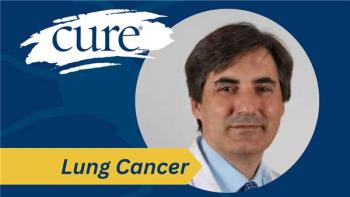
New Therapies Offer a Brighter Future for Multiple Myeloma
An expert discusses treating multiple myeloma with potential curative intent.
Patients with multiple myeloma have more treatment options than ever before, and with these newer therapies could come the possibility of curing patients of their disease, according to one expert.
Although a relatively uncommon cancer,
“There are multiple ways in which you can combine one drug from group A, one drug from group B and one drug from group C with different side effect profiles and different efficacies,” James E. Hoffman, M.D., an assistant professor of clinical medicine at Sylvester Comprehensive Cancer Center, University of Miami Health System, said in an interview with Oncology Live, a sister publication of CURE.
Many of these medications have helped improve survival and with these options health care professionals can select the best course of treatment for their patient. “A decade ago, the options were so limited that we would just throw medications at patients because we didn’t have any alternative options,” Hoffman said. “Now, you can be much more diligent about choosing medications that won't hurt the patient.”
For instance, clinicians can now avoid using heart-toxic medications if someone has a problem with their heart, Hoffman explained. The same can be applied to someone who may have a problem with their nerves. These patients would not receive nerve-toxic therapies.
“Myeloma is still an incurable illness in 2019, and in an ideal world, we would start to develop therapies that could offer curative potential so that patients could be treated for some finite period of time and then be able to go off therapy,” he said. “Right now, the disease is treated more like a chronic illness, meaning patients remain on therapy. This is a big life burden for them — physically, financially and emotionally.”
Chimeric antigen receptor (CAR)-T cell therapy is an area that is drawing excitement. Already approved to treat certain adult and pediatric patients with lymphoma and leukemia, CAR-T cell therapies are also being studied in clinical trials to treat multiple myeloma. Currently, a few dozen medications are being tested and, according to Hoffman, bb2121 is the farthest along.
“This class of therapy, and more broadly, immunotherapies like this, hold a lot of promise —maybe even curative promise — for patients with relapsed disease,” Hoffman said.
CAR-T cell therapy works by removing a patient’s T cells, altering them in a lab, then reinfusing them into their body so they can find and destroy cancer cells. In multiple myeloma, the protein B-cell maturation antigen (BCMA) is present on the cells. The bb2121 therapy binds to BCMA and kills tumor cells.
Looking to the future, Hoffman said he thinks monoclonal antibodies will be combined with some of the good medications in use now for initial treatment of patients who are newly diagnosed. By doing so, Hoffman explained that patients will likely get durable responses upfront, potentially pushing relapse further down the road or eliminating relapse entirely.
“Hopefully, CAR-T type therapy or (a similar approach), where we can use really potent immunotherapies, will emerge in the relapsed sphere, offering the potential for a single treatment with durable, or even potentially curative possibility,” Hoffman said.





